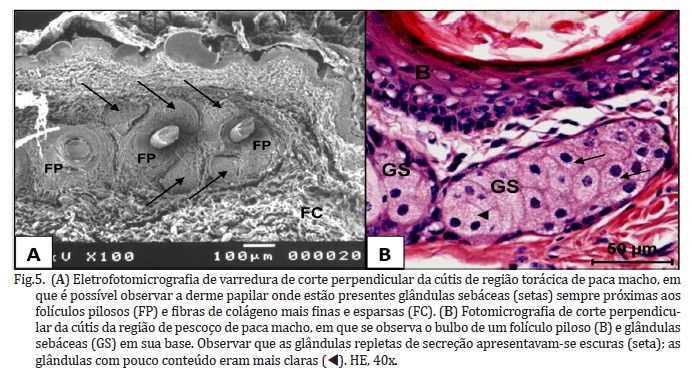Considering the lack of detailed information about the morphology of paca, which is the second largest rodent of Brazilian's fauna, with excellent meat quality and, due to the importance of the common integument, we described the morphology, ultrastructure and morphometry of the skin of eight pacas (Cuniculus paca), males and females, through comparative analysis of skin's segments of the cervical, dorsal and medial carpal portions. Macroscopic characteristics of the coat were studied. Part of the segments of cutaneous regions was analyzed by light microscopy, and the other part by scanning electron microscopy. We measured the thickness of dermis, epidermis, stratum corneum, the profiles of the collagen fibers of reticular dermis and the area of filled sebaceous gland cells. The results were analyzed by descriptive statistics and "T" test (p<0.001). The color of the coat is reddish brown with bristles arranged in groups. The architecture of the skin and skin appendages resembles those of mammals in general, although there are no sweat glands. According to the morphometric analysis, this study shows differences of the skin architecture between male and female pacas and also between various body regions in the same animal.
Paca; Cuniculus paca; rodents; integument; cutaneous glands; histology; scanning electron microscopy

 Morphology, ultrastructure and morphometry of the tegument of paca (Cuniculus paca Linnaeus, 1766) raised in captivity
Morphology, ultrastructure and morphometry of the tegument of paca (Cuniculus paca Linnaeus, 1766) raised in captivity












